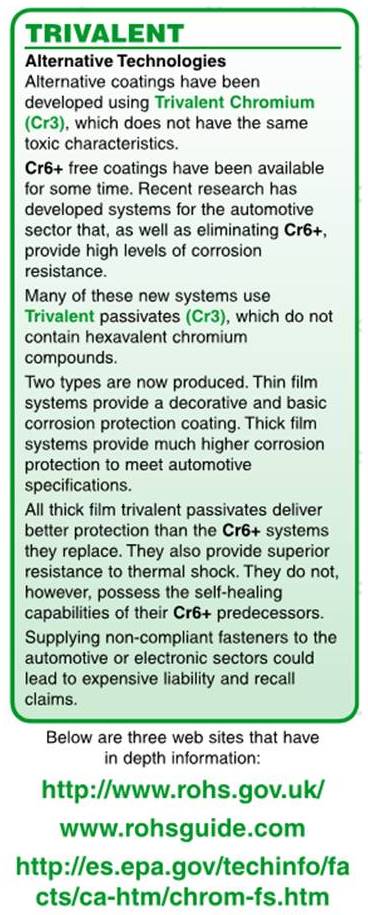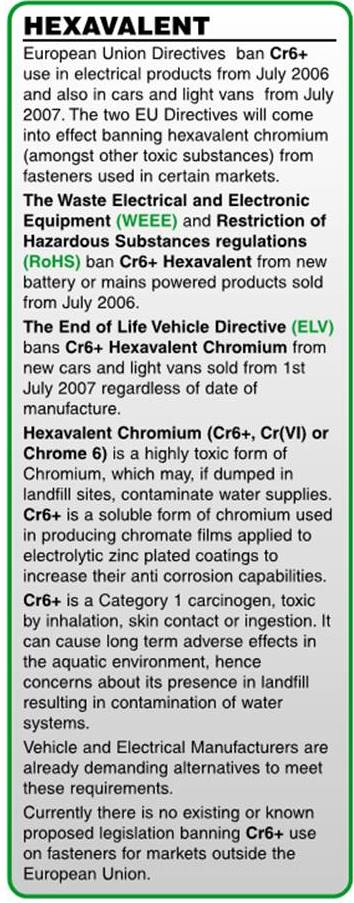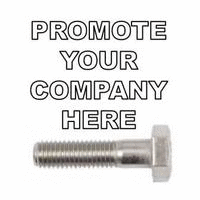Chromium Trivalent Vs Hexavalent
Chromate passivation for Fasteners
Chromate passivation on top for electroplated fastener finishes is effected by legislation, as the hexavalent is fazed out the issue of cross contamination still exists

Hexavalent Chromium Passivation
Chromium(VI), Cr(VI), chromium 6, Cr6+
Hexavalent chromium ban imposed by European directives. Hexavalent Cr6+ is replaced with the non-toxic Trivalent chromium Cr3; Cr3 does not have the same healing properties of Cr6.
Chromium plating traditionally was Hexavalent chromium being used for decorative and functional finishes. Hexavalent chromium plating is produced by submerging substrates into a bath of chromium trioxide (CrO3) and sulfuric acid (SO4). This type of chromium plating provides corrosion and wear resistance, as well as aesthetic appeal.
Hexavalent chromium plating disadvantage is that this type of plating produces several by-products which are hazardous waste, including lead chromates and barium sulfate. Hexavalent chromium is a dangerous substance and carcinogen and is heavily regulated. In recent years, automotive OEMs have replaced hexavalent chromium finishes with more eco-friendly finishes.
Fasteners passivated with Hexavalent chromium are the major issue in that the passivation was designed to improve resistance to corrosion, it replacement Trivalent chromium passivation has been generally problem free but is not as effective.
Trivalent Chromium Passivation
Chromium (iii). Cr3
Trivalent chromium is the alternative method of decorative chrome plating, and is the environmentally acceptable alternative to hexavalent chromium, with many of the same characteristics; just like hexavalent chrome finishes, trivalent chrome provides scratch and corrosion resistance and are available in a variety of colour options. Trivalent chromium plating uses chromium sulfate or chromium chloride as its main ingredient, instead of chromium trioxide; making trivalent chromium less toxic than hexavalent chromium.
While the trivalent chromium plating process is more difficult to control, and the necessary chemicals more expensive than that used for hexavalent chromium, the advantages of this method make it cost-competitive with other methods of finishing. The trivalent process requires less energy than the hexavalent process and can withstand current interruptions, making it more robust. Trivalent chromium’s lower toxicity means that it is regulated less stringently, reducing hazardous waste and other compliance costs.




